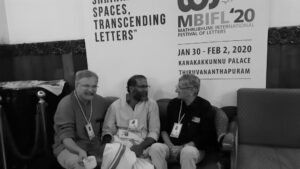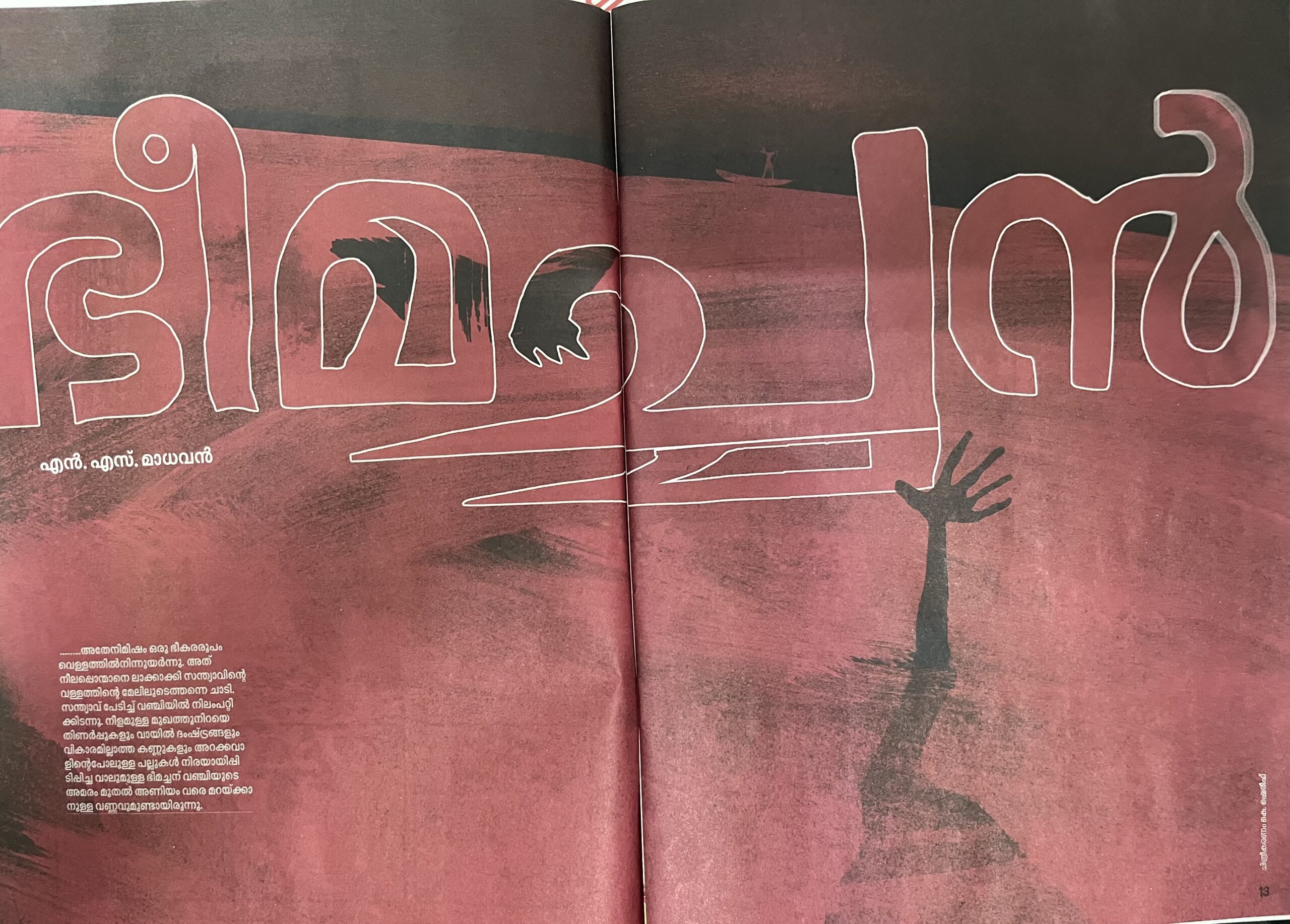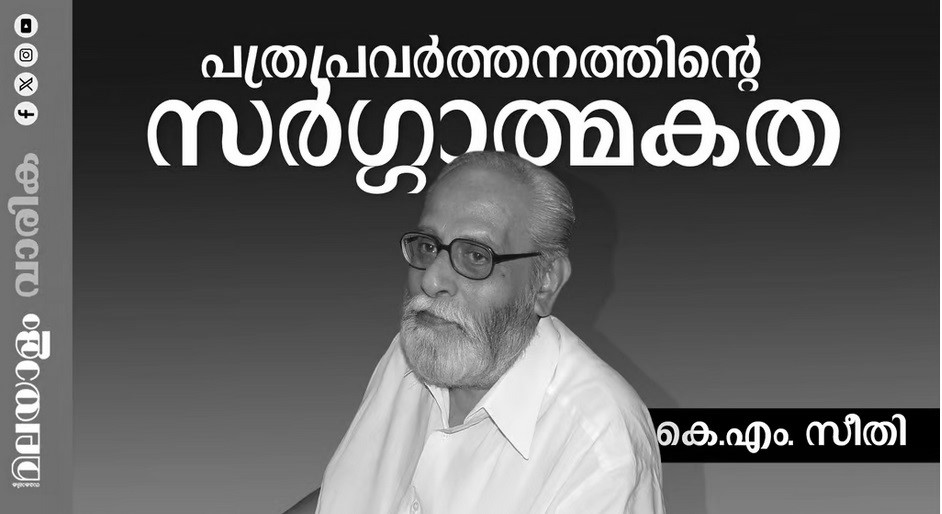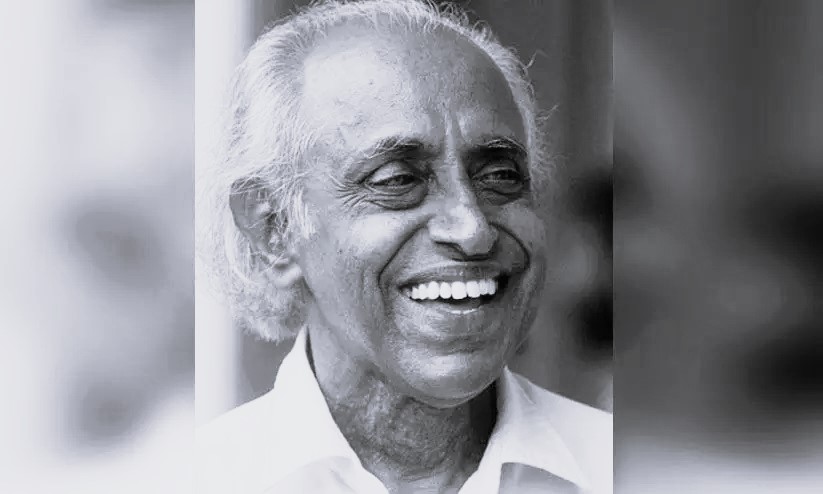In his remarkable story Bheemachan, writer N.S. Madhavan graphically captures the harrowing world of crocodile hunting in the backwaters of Kochi (in three issues of Mathrubhumi weekly). NSM pays homage to a similar narrative written by C.S. Gopala Panikkar a century ago, during a time when the people of Kochi lived in fear of these formidable predators. With a commanding tone and an acute sense of the local ecosystem, Madhavan portrays the coastal communities’ struggle for survival amid the persistent threats of crocodile attacks.
The protagonists, Santyav and his wife Anasthasya, traverse this perilous landscape, their lives immersed in the very essence of the Kochi backwaters. Madhavan excels in his depiction of the ecosystem and his use of the local dialect, enriching the narrative with originality and depth. The story unfolds within a broader context of human-animal conflict. It also reminds of the subtle dimensions of the contemporary political tensions involving a significant/dominant character. The most exciting dimension is the role of Anasthasya, a vibrant part of the story. This masterful blend of ecological and social themes makes Bheemachan a powerful and compelling read.
 With NSM@MBILFL’20
With NSM@MBILFL’20
I recall that the narrative style in NSM’s earlier novel, Lanthan Batheriyile Luthiniyakal, exudes freshness and warmth. The story of Lanthan Bathery stands out as one of the finest in recent Malayalam literature. Madhavan skillfully captures the colloquial language of the Kochi region, and the humour in the characterizations and dialogues adds to the novel’s charm. Bheemachan adds to the richness of this style.




